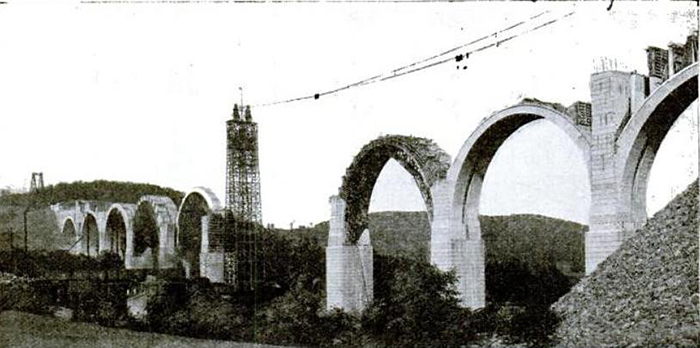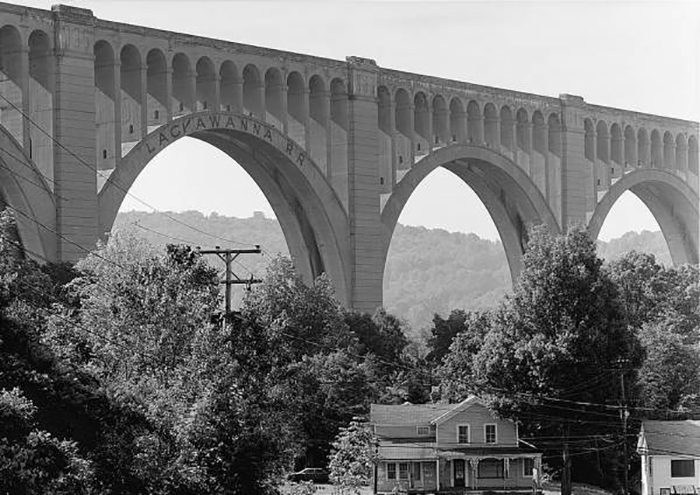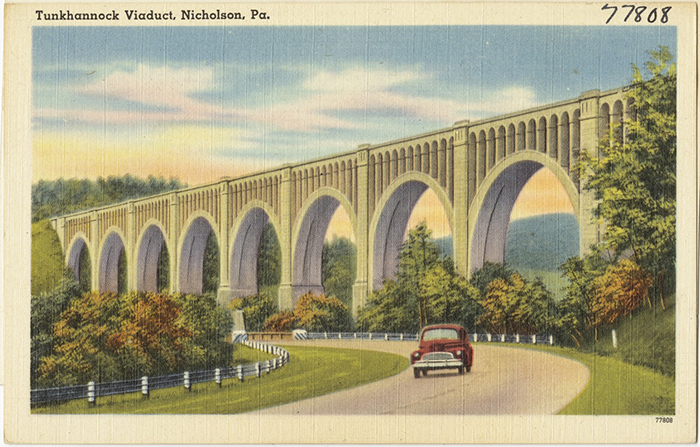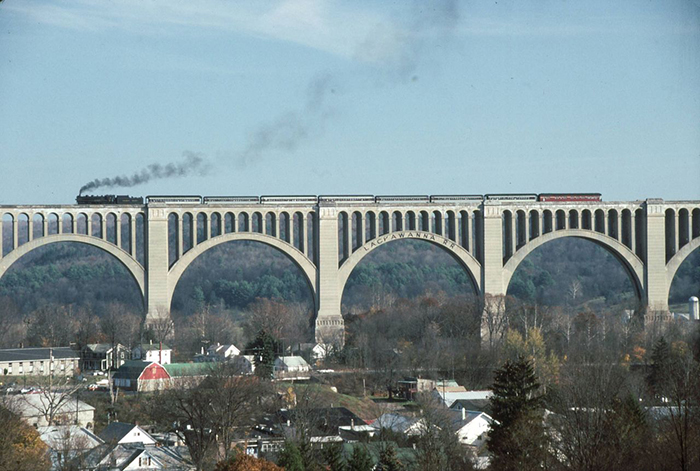

 STUART JORDAN explores this bridge, which was the largest concrete structure in the world when built.
STUART JORDAN explores this bridge, which was the largest concrete structure in the world when built.
The Sunbury Line is owned and operated by Norfolk Southern Railway, and runs from Sunbury, Pennsylvania to Binghampton, New York. The previous owner of the line was the Delaware, Lackawanna and Western Railroad, and in the early 1900s it was decided that the line should be rerouted to cut travel times. The Nicholson Cutoff, as it was known, would ‘straighten-out’ the route, as about half of the original line was curved track.
The area was a hub of northern Pennsylvania’s coal, iron, and steel industries, with the region producing 80% of the world’s anthracite coal at the turn of the 20th Century, so any improvement on the movement of freight was well worth it.

The viaduct under construction in 1914.
To carry the railway across the Tunkannock Creek at Nicholson, a viaduct would have to be built. The viaduct was designed by Abraham Burton Cohen, a civil engineer who worked on many bridge projects for the DL&WRR around Pennsylvania and New Jersey. Cohen was well known for his innovation in concrete design and was an active member of the American Concrete Institute.

Period image shortly after construction, showing the viaduct towering over local buildings.
The contractor Flickwir & Bush began construction on the deck arch bridge in May 1912. The population of the town of Nicholson rose from 900 to 2700 during the construction. The bridge was to have eleven piers and would be 2,375ft long. Constructors had to excavate 138ft down to reach the bedrock in order to create the foundations for the piers. All-in-all, 167 cubic yards of concrete was used in construction. The total weight of the bridge is around 300,000,000kg, almost half of that underground.
During construction, workers on piers 5 and 6 found quicksand, which added many man-hours to the construction time. Although at the time working with concrete was very modern, the labourers only had steam shovels and dynamite for excavation. A cement mixer was built on site.

The Tunkhannock Creek Viaduct became a local landmark, featuring on postcards in the 1930s and 40s.
The whole Nicholson Cutoff, including the viaduct, was opened in November 1915 – three years after construction began. The new route was now shorter by 3.6 miles – cutting 21 minutes for passengers and an hour for freight from the travel time.

A heritage steam train passes over the viaduct in the 2000s.
When it was completed, the Tunkhannock Creek Viaduct was the largest concrete structure in the world. This was recognised in 1975 by the American Society of Civil Engineers, who designated the structure a Historic Civil Engineering Landmark. It was also added to the National Register of Historic Places in 1977. A street fair is held in Nicholson annually in September to celebrate the building of the bridge.